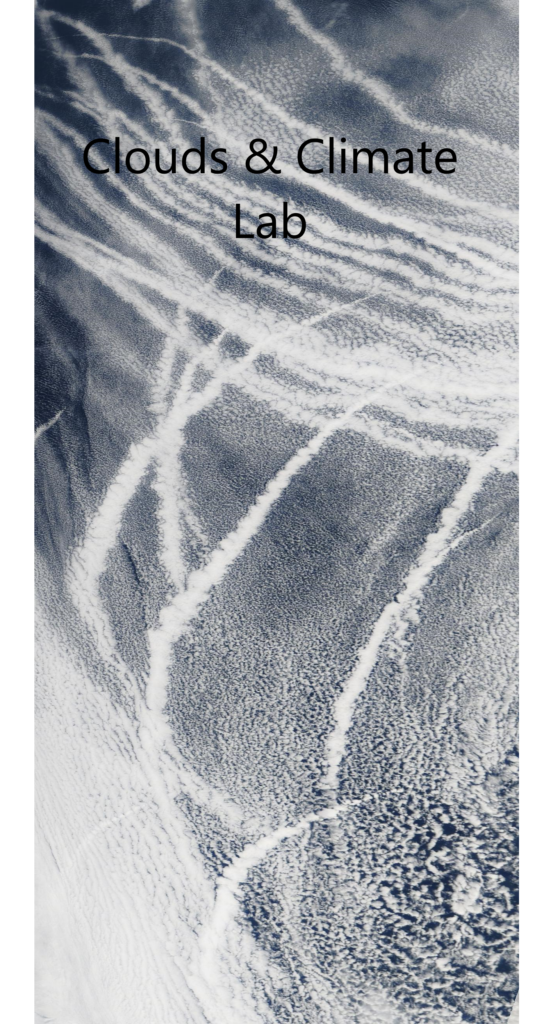Research

Aerosols are tiny solid and liquid air pollution particles with big impacts on Earth’s climate. Moreover, the impact of anthropogenic aerosols on clouds is the most uncertain driver of climate change. If the poorly-quantified aerosol cooling has thus far masked a large part of well-quantified greenhouse gas warming, then Earth’s climate would be highly sensitive to anthropogenic forcing. The general aim of our research is to better constrain aerosol forcing to enable more reliable projections of climate futures, informing climate change mitigation and adaptation.
We improve the understanding of aerosol-cloud interactions using plume-shaped polluted cloud track opportunistic experiments, where experiment-like conditions occur without any intervention by the researcher. We rely on remote sensing of clouds and precipitation to study aerosol impacts on clouds. To what extent are clouds more extensive, thicker and brighter in response to anthropogenic aerosol pollution? Answering these questions helps to solve one of the greatest puzzles in climate science.
In the image on the left, the unpolluted clouds are given in brownish colours and cloud tracks polluted by industrial aerosols in greyish colours. The industrial aerosol sources inducing the polluted cloud tracks are indicated with place markers.
We need opportunistic experiments to overcome the noise induced by the meteorological covariability and infer the causal impact of aerosols on clouds.
Shark attacks have been found to be correlated to ice cream sales. However, eating ice cream does not cause the attack! It is the nice sunny weather that attracts more people to go to the beach, leads to elevated ice cream sales, and favours people to go swimming. Similarly, weather controls the properties of both aerosols and clouds! Although the causal impact of aerosols on clouds exists, it’s challenging to quantify it!


Cloud tracks polluted by aerosols from industries, fires, volcanoes or ships serve as opportunistic experiments of aerosol-cloud interactions. Using satellite data, we compare the properties of clouds in the aerosol-polluted opportunistic experiment regions to the properties of nearby unpolluted clouds. Polluted and unpolluted regions are right next to each other, so the weather conditions are the same and only the level of aerosol pollution is changing!
In the image on the left (adapted from Christensen et al., 2022 ACP), an industrial aerosol plume induces a polluted cloud track.



